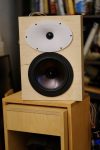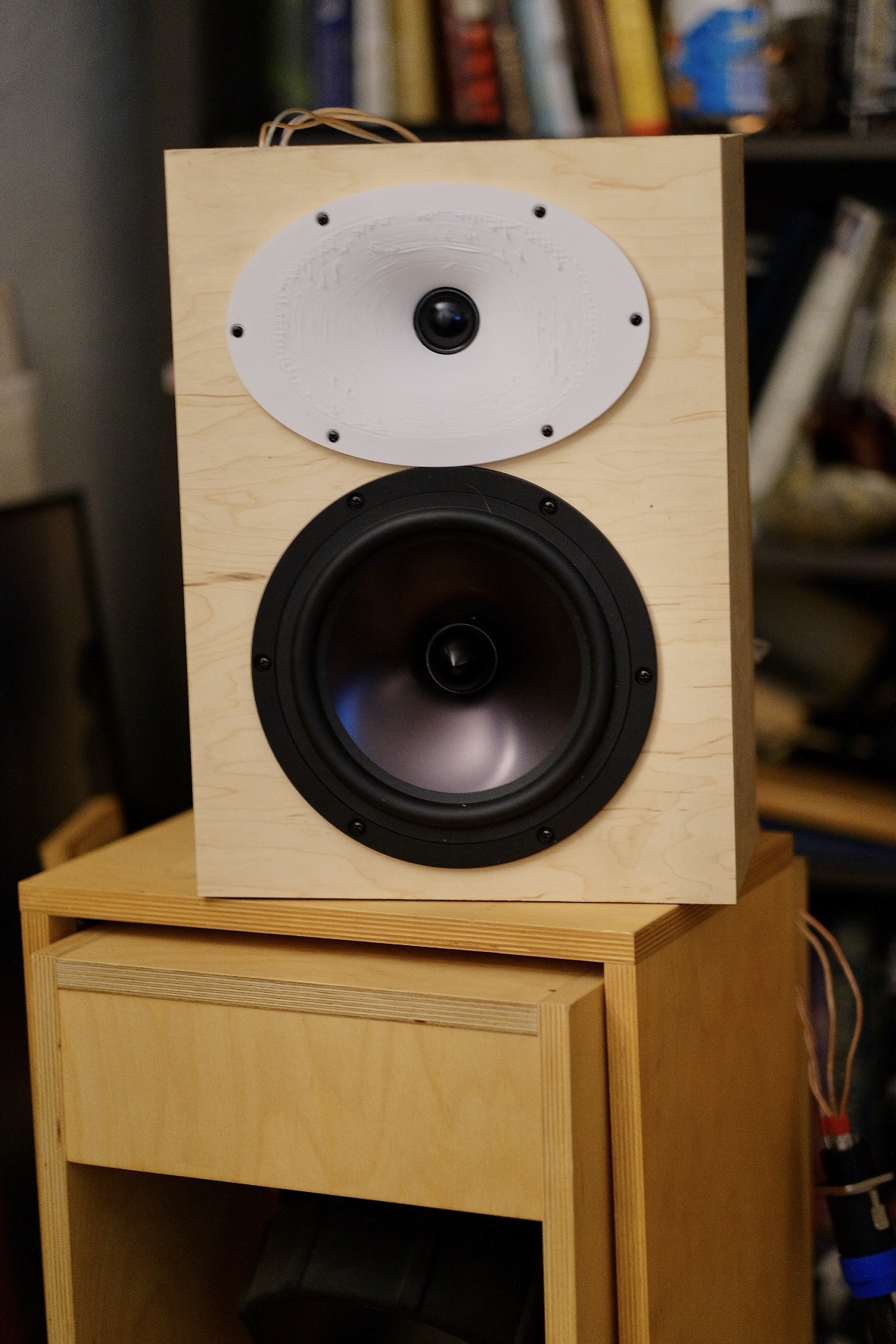
When I built our home theater I used the JBL LSR-308p MKii as the front left and right speakers. Overall they sound very good, but they don’t quite hold up when the action is at its peak. I’ve never had a very successful non-subwoofer speaker design so I set out to design something that would play a bit louder than the JBLs, while sounding at least as good as when they’re at their best.
A while ago I built the DIYSoundgroup HT-8, and in many ways it’s already exactly what I want. My main complaint is that I snatched up a single copy of it and it’s been almost continuously out of stock for the duration of the pandemic so I can’t build any more of them. The waveguides aren’t available for purchase, and what this speaker has in common with the JBL is a great waveguide.
One thing that really helps a speaker sound its best is for the off-axis sound to be very similar to the on-axis sound. This is because much of the sound you hear bounces around the room for a while before it makes its way to your ear. If the sound that goes off in various directions is significantly different from the sound that makes its way directly to you then the result sounds less natural. All woofers (and mids, and tweeters for that matter) exhibit something called “beaming” where they transition from omnidirectional radiation at low frequencies to more and more directional radiation at higher frequencies. When a woofer is larger than some small fraction of the wavelength of the sound it is reproducing the sound starts to tighten up into a narrow ‘beam’, where those frequencies would make their way straight ahead without going out into the room. When the sound transitions from the woofer to the tweeter the smaller driver has a much wider dispersion than the larger one and there’s a sudden discontinuity in the off-axis sound. A special type of horn tweeter that we call a waveguide can make the tweeter’s low frequency sound a much better match to where the woofer starts to beam just a little bit, resulting in a much better behaved off-axis response.
There are other benefits to waveguides; they reduce the stress on the tweeter and let it play louder with less distortion. You can read more about that on Zaph Audio. He modified some off-the-shelf horns to fit a conventional dome tweeter, which seems to give a more refined sound than a lot of pro audio compression drivers. In the years since his project we have had advances in free boundary element simulation software and 3D printing, and somebody has taken advantage of this and has begun designing, simulating, and printing custom waveguides to make this conversion even better. His site is: Waveguides | somasonus, and I have printed some of his waveguides to test. This has the advantage of allowing me to modify them to suit my needs, and they can’t be out of stock because I can print whatever I want.
I decided that the drivers I wanted to use first are the Dayton RS225-4 woofer and the Dayton RST28A tweeter. A test bench report on the tweeter is available on AudioExpress, but I’m having trouble find third party reviews of the woofer to link.
The speaker that I’d love to emulate with this would be the Procella P8, which I understand sell for over $2500 each. Those definitely play a good bit louder than I require, so even if the drivers I’ve chosen are sure to come up short of the maximum output then I’ll be in good shape if I come close.
Here’s my first prototype, I’ll post more as I’m able.

